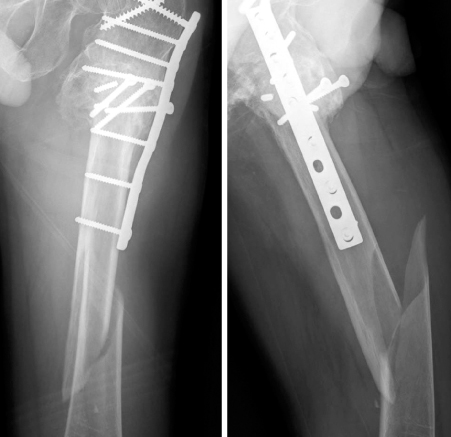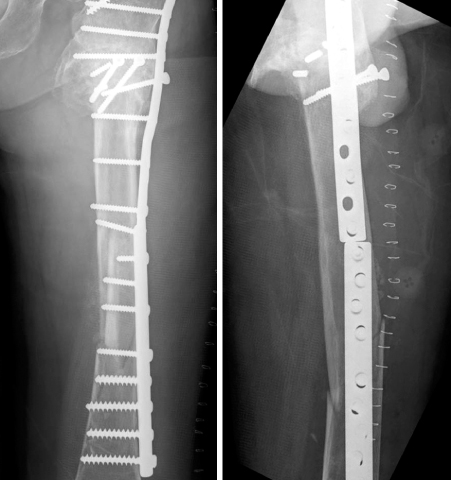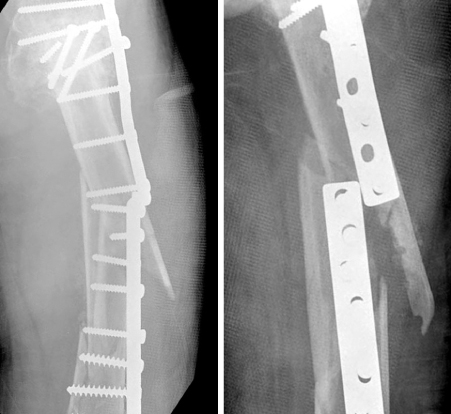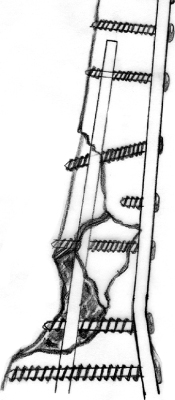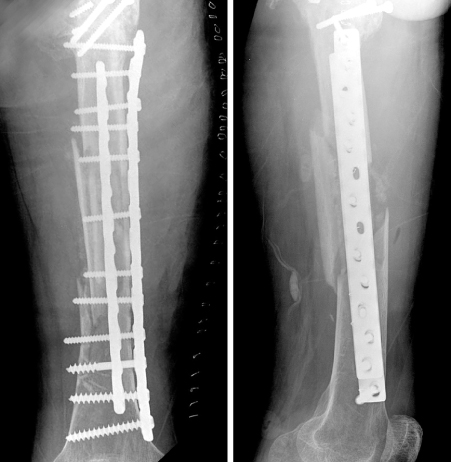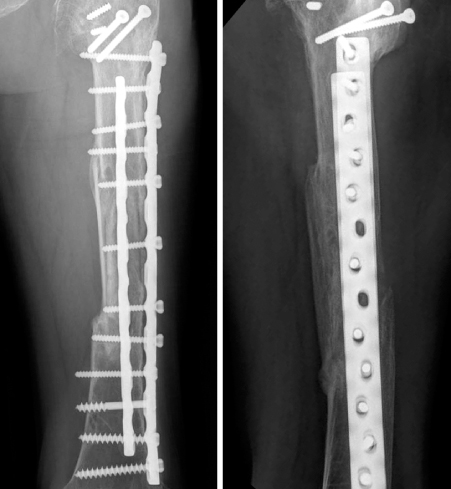J Korean Fract Soc.
2007 Oct;20(4):345-348. 10.12671/jkfs.2007.20.4.345.
Intramedullary Plate Fixation for the Comminuted Fracture of the Femoral Shaft: A Case Report
- Affiliations
-
- 1Department of Orthopedic Surgery, Gwangju Veterans Hospital, Gwangju, Korea. taesado@naver.com
- KMID: 2297517
- DOI: http://doi.org/10.12671/jkfs.2007.20.4.345
Abstract
- A case of the comminuted fracture of the femoral shaft with osteoporosis is presented. The patient lacked sufficient bony stability and cortical bone-contact which allows union by conventional reconstruction method. Therefore, the authors performed a technique utilizing an intramedullary plate in combination with the standard lateral plate in order to obtain bony stabilization, early range of motion of the knee, and partial weight bearing ambulation and the technique is introduced.
Keyword
MeSH Terms
Figure
Reference
-
1. Johnson EE. Custom titanium plating for failed nonunion or delayed internal fixation of femoral fractures. Clin Orthop Relat Res. 1988; 234:195–203.
Article2. Kim YM, Chung MS, Seong SC. Fracture. 1st ed. Seoul: Kwun-ja Inc;1977. p. 714–722.3. Mast J, Jakob R, Ganz R. Planning and Reduction Technique in Fracture Surgery. Berlin-heidelberg: Springer-Verlag;1989.4. Matelic TM, Monroe MT, Mast JW. The use of endosteal substitution in the treatment of recalcitrant nonunions of the femur: report of seven cases. J Orthop Trauma. 1996; 10:1–6.
Article5. Russell GV Jr, Pearsall AW. Intramedullary plate fixation of a distal humerus fracture: a case report. J Orthop Trauma. 2002; 16:353–356.
Article
- Full Text Links
- Actions
-
Cited
- CITED
-
- Close
- Share
- Similar articles
-
- Metal failure after compression plate fixation in femoral shaft fracture
- Operative Treatment of Femoral Shaft Fracture in Adult: Compression Plate Versus Intramedullary Nailing for Femoral Shaft Fracture
- Surgical Treatment of Ipsilateral Multi-Level Femoral Fracture Treated Using Antegrade Intramedullary Nail
- Comparative Study between Compression Plate with Screw Fixation and Interlocking Intramedullary Nailing of Tibial Shaft Fractures in Adult
- Comparative Clinical Study Between Plating and Intramedullary Nailing of Femoral Shaft Fractures in Adult

